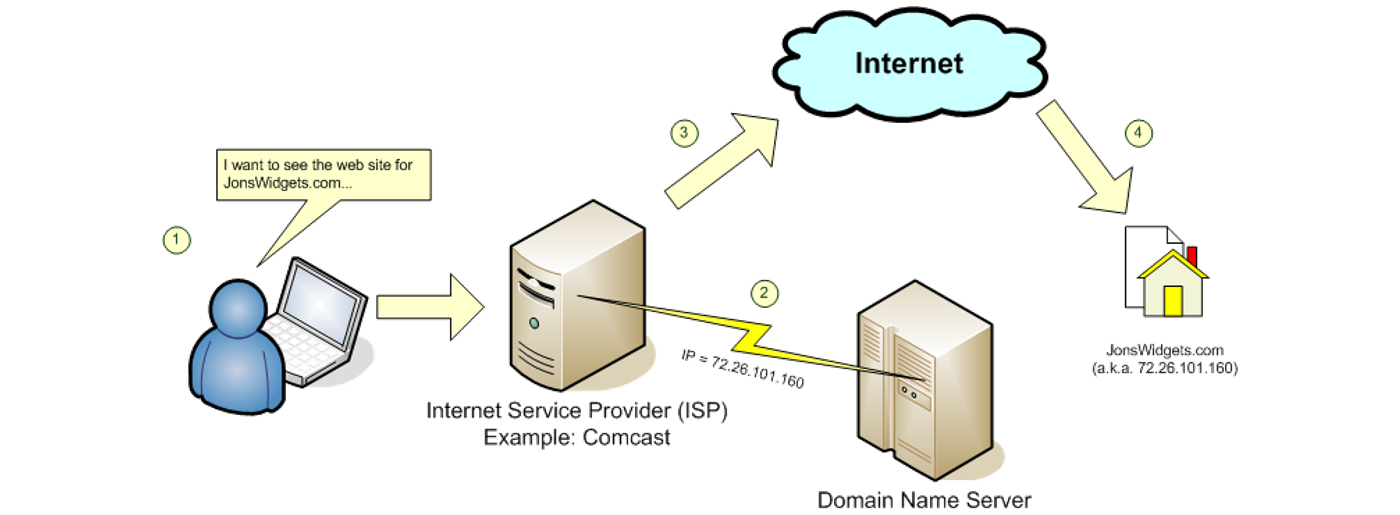Comprehending DNS Propagation and Its Effect on Website Modifications

We frequently hear about DNS propagation in the rapidly changing realms of innovation and the Internet, particularly in the context of site modifications. Nonetheless, many users are unsure about what it is, how it functions, and why it matters. Here, we will discuss its significance and how it impacts site updates.
What’s the Propagation of DNS?
The Domain Name System (DNS) is the contact directory of the online world. It converts easily understood domain names, such as www.example.com, into Internet Protocol (IP) addresses that devices need to find and connect. The duration required for DNS updates to spread over the World Wide Web is known as DNS propagation.

Any modifications you make to the DNS, including changing your domain name, electronic mail server configuration, or web hosting company, must be propagated to all DNS servers throughout the globe. DNS servers are located all over the world and hold data of Internet Protocol (IP) addresses and domain names. In essence, the DNS propagation process is the duration needed for these DNS servers to be modified.
Recognizing the Propagation Mechanism
Consider the Domain Name System (DNS) propagation mechanism to be a large network of linked servers. Any DNS modifications that you create, like changing the Internet Protocol (IP) address of your website, need to be sent to each of these providers. Whilst many modifications take action after 24 hours, the duration required for every server to modify its information differs and may exceed anything from a few minutes to 48 hours.
This is a basic description of how the Domain Name System propagation works:
- Modification Request: Using the management portal of your hosting company or domain registrar, you may modify your DNS configuration.
- Sending a revision to a reliable DNS server: The official DNS server for your domain receives your modification. In addition to maintaining the original data, this server is in charge of distributing the updated data to other DNS servers.
- DNS servers that recur: A recursive DNS server is consulted by people attempting to visit your website, but it might not have the most recent revision of the data.
- Time to Live (TTL): A DNS server’s ability to store data before asking for a modification from the authorized DNS server is based on the TTL value contained in the domain name server (DNS) data. Speedy Domain Name System propagation is the effect of lower TTL values.
- Duration of Propagation: Globally, several DNS servers progressively modify their files in accordance with the TTL. This procedure keeps on unless every DNS server uses the most recent data.
Domain Name System Propagation’s Effect on Website Updates

DNS propagation can significantly affect your website, especially if you make modifications to these:
- Switching Web Servers: When you transfer the site to a new web hosting service provider, you must adjust the domain name server (DNS) setups to refer to the new server’s Internet Protocol (IP) address. Although the new server is being reached by a few customers, others might be redirected to the previous one during the Domain Name System propagation. That can lead to discrepancies and disturbances.
- Modifying DNS Data: The propagation procedure is also involved in modifications made to DNS data, like inserting new subdomains or changing electronic mail server configurations. There might be disruptions to services until the modifications take effect.
- Changing Your Domain Name: If you modify the domain name of your website, the previous domain continues to respond to the fresh one after propagation. In order to give customers a smooth transition, redirection management is essential.
- Setup of SSL Certificates: DNS adjustments could be necessary for SSL certificate installation or updates. On your website, the time taken for propagation may have an impact on safe connectivity.
Reducing the Domain Name System Propagation Latency

DNS transmission delays are unavoidable, however, you may reduce their effects by doing the following:
- Reduce TTL: Set up your DNS data to have a shorter TTL before implementing any modifications. By doing this, the propagation period will be shortened as the DNS providers upgrade more often.
- Make a Plan: Take the DNS propagation duration into consideration while implementing big modifications to your domain or website. If at all feasible, plan modifications for times when traffic isn’t as heavy.
- Track Your Growth: Use internet resources and applications that monitor DNS updates to remain up-to-date with the propagation procedure. This might assist you in determining when the modifications will be done.
- Backup Web Hosting: When moving hosting providers, keep a backup copy of the website on the previous server for a time to guarantee continuous operation while the changes take effect.
- Utilize Content Delivery Networks (CDNs): By delivering cached material from servers throughout the globe, CDNs can lessen the negative effects of DNS propagation. This decreases the dependency on the precise position of a single DNS server.
In Summary
Comprehending DNS propagation is essential for website owners and managers in the constantly evolving realm of the virtual world. This procedure guarantees that the modifications to your DNS are reflected globally, allowing visitors to see the site utilizing the most recent configuration. Although propagation might be an issue, preparing ahead of time and minimizing disruptions can assist you in controlling its effects. Thus, whenever you adjust the DNS configurations for your website, keep in mind that it will take some time for the extensive DNS network of the global web to be upgraded and take effect.




Leave a Reply